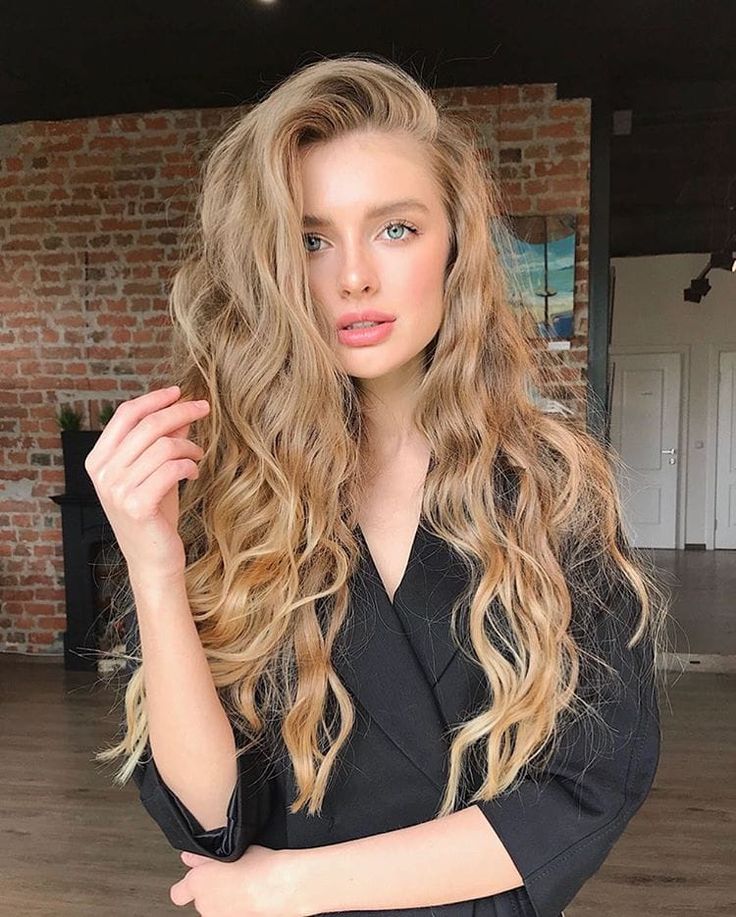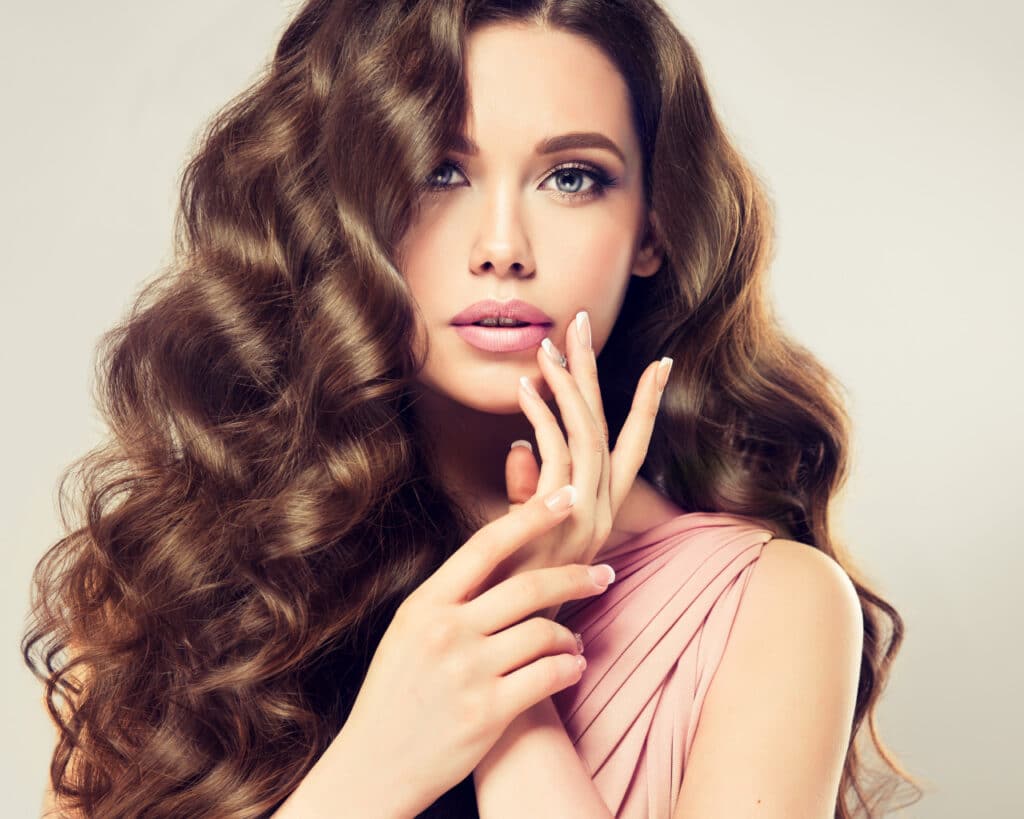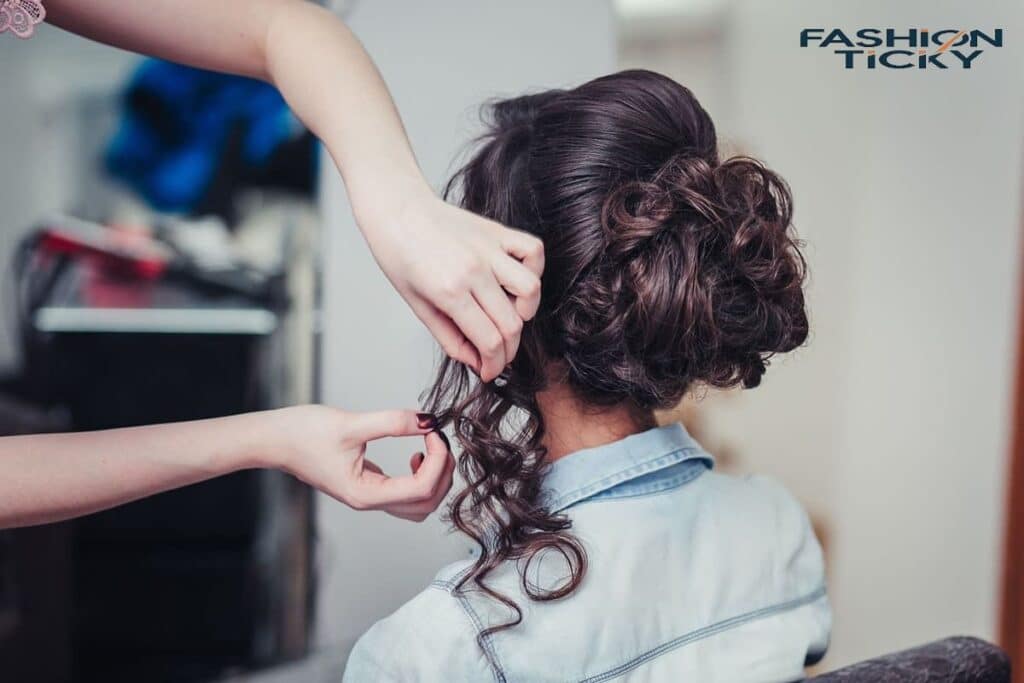You may have been admiring those beautiful, bouncy curly hairstyles that you see around, but are not quite certain if your wavy hair would go well with them. You do not have to worry any longer as these are pros and cons of such cut on wavy hair; it will help to guide your decision making process hence you can make an informed choice that suits you best. Let’s get started.
What is a Curly Cut?
A curly cut is a specialized haircut technique designed to enhance and shape your natural curl pattern. Unlike traditional cuts that often work against the curl, a curly cut involves carefully sculpting the hair to compliment and define the unique curl formation.
The key principles behind a curly cut include:
- Cutting curl by curl: Instead of blunt, straight lines, the stylist cuts along the natural curve and shape of each individual ringlet.
- Removing bulk and weight: Strategic layers and thinning reduce bulk, allowing curls to spring up and form their natural pattern.
- Creating movement and shape: Precise cutting and shaping techniques add movement, bounce, and a beautiful silhouette to the curly style.
Here’s an example of the difference a curly cut can make:

As you can see, the after photo showcases defined, bouncy ringlets that gracefully frame the face – a stark contrast from the stretched-out, formless waves before.
Your Wave Pattern Matters
Not all wavy hair is created equal. The effectiveness of a curly cut depends greatly on your specific wave pattern. Think of wave patterns like fingerprints – we each have our own unique curl signature.
Generally speaking, wave patterns fall into these categories:
- Loose Waves: These loose, elongated “S” shaped patterns have the most spaced-out curvature. They tend to fall closer to straight hair.
- Beachy Waves: As the name implies, these waves mimic the tousled, piece-y texture of hair at the beach. The pattern alternates between straight and wavy sections.
- Defined Waves: These waves have a more distinct, consistent curve from roots to ends. They’re not as tight as a curl but have plenty of body and movement.
Your wave’s density, curl circumference, and degree of wave/curve will determine if a curly cut is a good fit. For looser patterns, a curly cut may be too much and cause frizz. But for tighter waves, it can work beautifully.
Read More: Is Conditioner Good for Curly Hair?
Pros of a Curly Cut for Wavy Hair
If your wave pattern is in that “defined wave” sweet spot, a curly cut can offer some stellar benefits:

Enhanced Definition and Bounce: By removing weight and sculpting along your natural curl pattern, a curly cut can instantly boost definition and spring. Those loose, limp waves get an energetic, bouncy transformation.
Customized Face-Flattering Shape: An experienced curl stylist can strategically layer and shape the cut to perfectly frame and flatter your specific face shape.
Less Long-Term Styling Time: With a cut that enhances your natural curl formation, you’ll spend far less time wrestling and restyling your hair every morning. Just apply products and air dry!
Anecdote: “I’ll never forget when my friend Alyssa got a curly cut for her thick, wavy hair. She used to spend over an hour each morning with a diffuser and load of products trying to ‘encourage’ her waves. After the cut, she just scrunched in a little gel and let her beautiful, formed spirals air dry – looking flawlessly tousled and ready to go!”
Cons to Consider
Of course, every coin has two sides. Here are some potential downsides to weigh before getting a curly cut:
Potential Increased Frizz: Those layers and shaping techniques that create definition can also leave the hair a bit more prone to frizz and environmental humidity exposure.
Regular Trims Needed: Since curly hair grows outward instead of straight down, you’ll likely need to visit the salon more often (every 6-8 weeks) for reshaping trims to maintain the cut’s shape and definition.
Transition Phase: There may be an awkward transition period as your hair adjusts to the new curl pattern and shaping. During this phase, consistent styling is key.
Managing Different Textures: Naturally wavy hair often has a mix of curl patterns, from looser pieces to tighter coils. A curly cut can highlight and exaggerate these textural differences.
The Styling Factor
Getting the right cut is only half the curly hair battle – having an effective styling routine is crucial. Here are some tips:
Product Recommendations: For defined waves, use lighter products like mousses, foams, and curl creams that enhance moisture without weighing hair down. Gels and stronger hold products may be too heavy.
| Product Type | Recommended Brands |
|---|---|
| Curl Mousses | Herbal Essences, DevaCurl, SheaMoisture |
| Curl Creams | Ouidad, SheaMoisture, Cantu |
| Curl Foams | Ouidad, DevaCurl |
Styling Techniques:
- Scrunching: After applying product, gently scrunch from roots to ends to encourage curl formation.
- Raking: Use your fingers or a wide-tooth comb to “rake” and separate curls.
- Diffusing: Use a diffuser attachment on your blowdryer to gently diffuse and dry curls into place.
Read more helpful guide on Fashion Ticky
Finding the Right Stylist

Perhaps the most critical factor in getting a successful curly cut is finding the RIGHT stylist. An inexperienced stylist can easily ruin your curl pattern and leave you with a frizzy, mis-shapen mess.
When searching for a curl-savvy stylist, look for these qualifications:
- Specialized Training: Ask if they’ve received official certification or training in curly cutting techniques.
- Curly Themselves: Stylists with naturally curly hair often have invaluable first-hand experience.
- Before/After Photos: Look at their curly cut portfolio to see their skill level.
In the consultation, come prepared with pictures of your ideal curl pattern and shape. Be very specific about your goals and concerns.
Case Study: “I made the mistake of going to a stylist who kept insisting she could ‘loosen up my curl pattern’ even after I clearly stated I wanted more definition. Two hours and one horror cut later, I ended up with a frizzy triangle of hair! Don’t assume all stylists understand curly cuts.”
Caring for Your New Cut
If you decide to get a curly cut, be prepared to make some adjustments to your hair care routine:
- Co-Wash or Low-Poo: Use a gentle, sulfate-free co-wash or low-poo shampoo to preserve your curl’s moisture.
- Deep Condition Regularly: Moisturized, supple curls look their best. Treat your waves to a deep conditioning mask 1-2 times per week.
- Limit Brushing: Detangle with a wide-tooth comb or your fingers when hair is damp. Brushing disturbs the curl pattern.
- Sleep Protection: Use a satin pillowcase and/or a soft bonnet or headscarf at night to prevent frizz and preserving your curl formation overnight.
- Refreshing Techniques: On non-wash days, lightly mist hair with a curl refresher spray and scrunch to revive your waves.
“The biggest myth is that curly hair gets ‘bigger’ when wet – no! Curls actually gain their shape and spring as they dry. Always style with product while soaking wet.” – Lorraine Massey, Curly Hair Specialist
For a visual tutorial, check out this Wavy Hair Styling Video.
FAQs
Q: How much does a curly cut typically cost?
A: Curly cuts tend to be more expensive than traditional cuts, as they require specialized training and more precision work. Expect to pay anywhere from $60-$150 depending on the salon and stylist’s expertise level.
Q: If I get a curly cut, can I still straighten my hair sometimes?
A: Yes, you can absolutely still straighten your hair on occasion after getting a curly cut. Just be gentle when brushing and apply a heat protectant product beforehand.
Q: I have multiple curl patterns in my hair. Will a curly cut work for me?
A: Stylists trained in curly cutting techniques are adept at blending different curl patterns together. They will cut each curl type accordingly to blend them into a cohesive shape and style.
Q: How long does it take for wavy hair to adjust after getting a curly cut?
A: It can take anywhere from 2-6 weeks for your waves to fully settle into their new curl pattern and shape after a curly cut. During this transition, be diligent with styling.
Q: Can I get a curly cut while growing out my waves from short hair?
A: Curly cuts can be adapted for shorter lengths too. But it may take some length (around 4+ inches) before your stylist can really enhance your wave pattern.
Q: Will getting layers make my wavy hair look even wavier?
A: Layers alone don’t necessarily create more wave, but they are a key component of curly cuts to remove bulk and weight, allowing your natural pattern to form better. The cutting technique matters most.
Q: How often should I clarify/remove product buildup with a curly cut?
A: Doing a clarifying reset wash every 4-6 weeks is recommended for curly hair to remove any residue weighing down your wave pattern.
Conclusion
So is a curly cut worth it for your wavy hair? As you can see, there are good arguments on both sides. It ultimately comes down to your:
- Wave Pattern: Defined, consistent waves in that “Goldilocks zone” tend to benefit most from a curly cut.
- Styling Ability: Being committed to using the right products and caring for your new cut is essential.
- Access to a Curl Expert: Having an experienced, curl-specializing stylist will make or break your results.
If you have the right wave pattern, are willing to adjust your hair routine, and can find a reputable curl stylist, then a curly cut may be a total game-changer for you! But if not, st
Farmingbase aims to create a community where farmers can share experiences and learn from each other. Whether you’re raising chickens or growing vegetables, Farmingbase offers the knowledge and tools to succeed. It’s a one-stop destination for all your farming needs.

Tina Hudson is the voice behind Fashion Ticky, a fashion blog she started featuring the latest trends in fashion and beauty. With her finger on the pulse of what’s hot each season, Tina shares outfit ideas, makeup tutorials, and styling tips to help her devoted readers develop their own fabulous sense of fashion. When she’s not blogging, you can find this savvy stylist hunting for vintage treasures and snapping Instagram-worthy travel pics with her French bulldog in tow.
